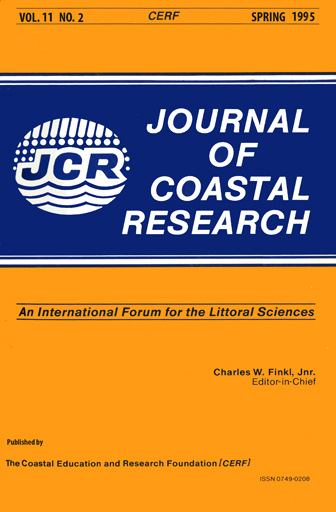Short Term Sediment Dynamics In a Southeastern U.S.A. Spartina Marsh
Keywords:
Sedimentation, estuary, wind, bioturbation, Pee Dee River, North Inlet, S.C.Abstract
Suspended sediments in tidal creeks and sediments deposited on the adjacent marsh surface, collected concurrently at Mud Bank (MB) and Sixty Bass (SB) in North Inlet, SC from March, 1991 until February, 1992 were compared. For 8 consecutive days of each lunar month (waxing moon neap tide until full moon spring tide), sediment traps collected daily and water pumped from the adjacent creek at 3.1 hour intervals (mid-flood, high tide, and mid-ebb) were analyzed for inorganic and organic sediment, as well as carbon and nitrogen content. Salinity, sea level, Pee Dee River discharge, rainfall, temperature, wind, and inundation time were examined as forcing functions. SB creek connects to the oceanic inlet, but MB is located near the tidal node where brackish and high salinity waters meet in a sharp halocline. Although the duration of inundation is approximately twice as long as SB (12.5 hr/d:7.4 hr/d) because of a 27 cm elevation difference. MB averaged more deposition (5.3 mg/d/cm2: 4.2 mg/d/cm2). Neither concentration of sediments in the water column nor duration of inundation were found to he strongly related to sediment deposition (r2 < 0.05). Variability among replicates on sediment traps suggests sediment dynamics at very small scales. High suspended sediment concentrations and deposition rates at MB during August, when Pee Dee River discharge was unseasonably high, indicate direct input of riverine sediments. The importance of bioturbation on sediment dynamics is suggested by the dominance of seasonal rather than spring-neap patterns.Downloads
Published
1995-04-09
Issue
Section
Special Thematic Section


